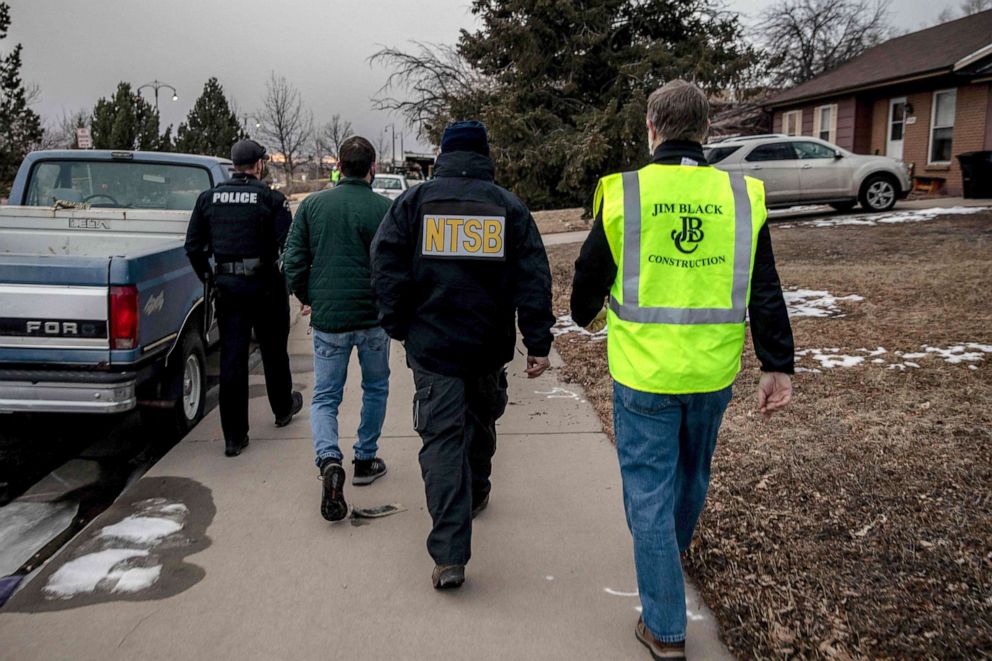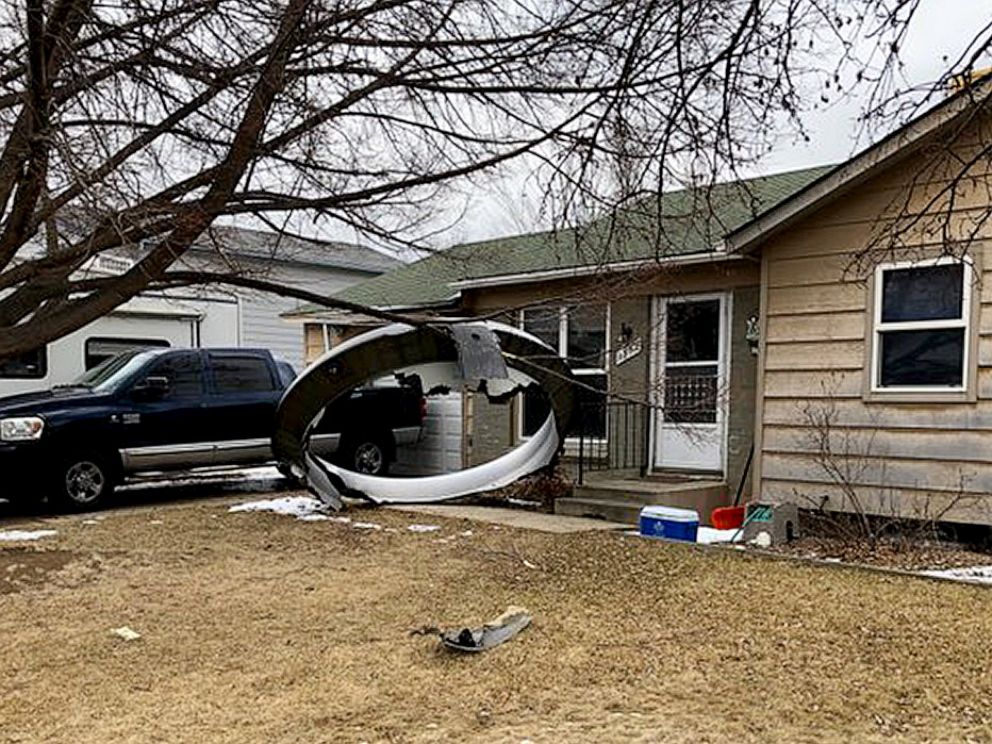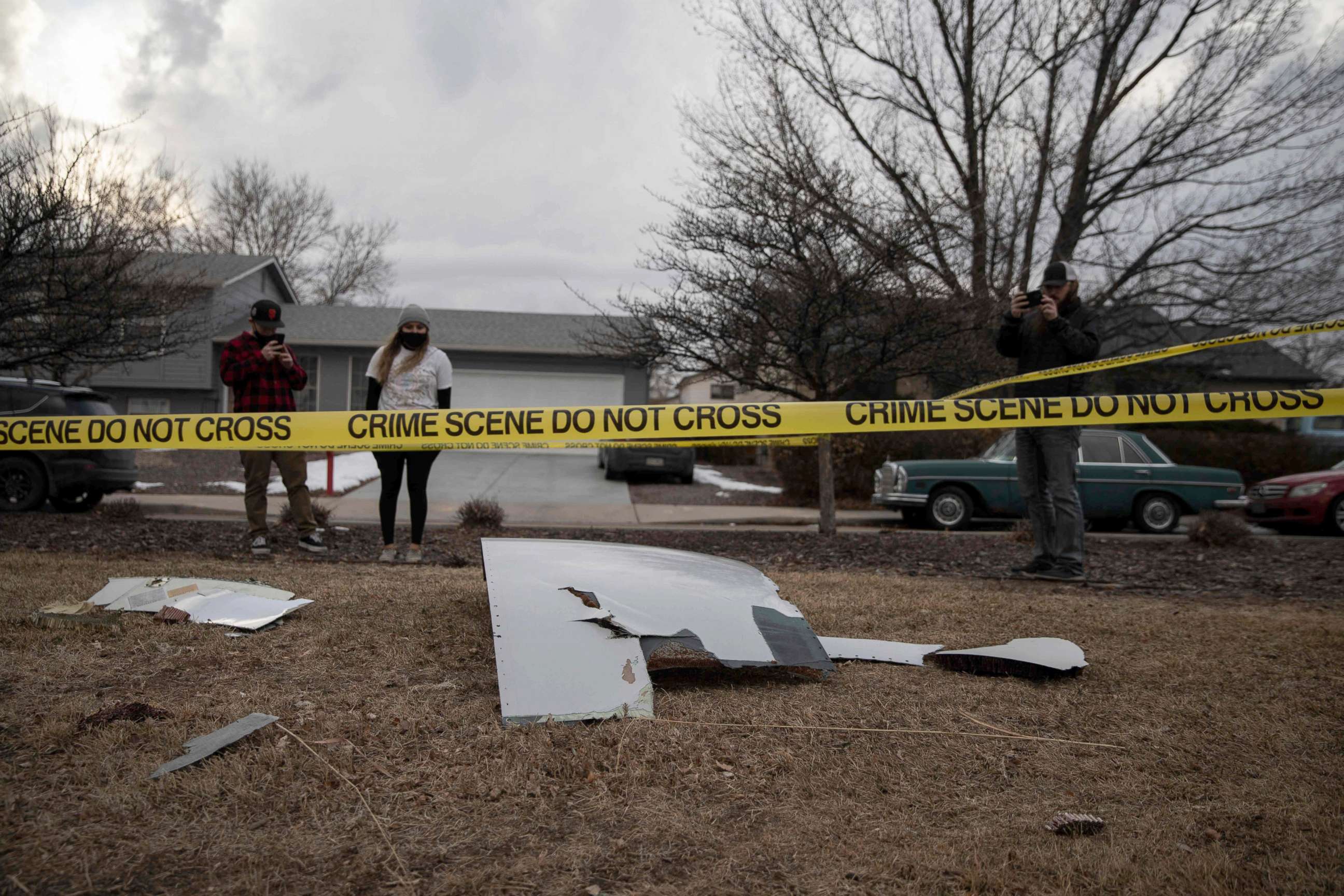What you need to know about the United engine failure, grounding of some Boeing 777s
United is temporarily removing the affected planes from its schedules.
Boeing is calling for the grounding of all 128 of its 777 jets powered by a specific Pratt and Whitney engine model until "the Federal Aviation Administration identifies the appropriate inspection protocol."
Boeing's announcement came one day after a United flight carrying 231 people experienced an engine failure shortly after takeoff from Denver International Airport -- causing debris to rain down on several neighborhoods. No one was injured on the plane or on the ground.
The FAA issued an Emergency Airworthiness Directive on Sunday calling for "immediate or stepped-up inspections" on Boeing 777s powered by the same Pratt and Whitney engine that failed during United Airlines flight 328.
FAA Administrator Steve Dickson said the order "will likely mean that some airplanes will be removed from service."

Immediately following the directive, United Airlines, which is the only U.S. airline affected by the directive, announced it would temporarily remove affected 777s from its schedules -- amounting to 52 aircraft.
Pratt and Whitney said it is "actively coordinating with operators and regulators to support the revised inspection interval of the Pratt & Whitney PW4000 engines that power Boeing 777 aircraft." The company also said it has dispatched a team to work with investigators.
What have investigators found?
The National Transportation Safety Board revealed on Sunday that two fan blades from United flight 328's engine were fractured.
A person familiar with the situation told ABC News that investigators will focus on a possible uncontained failure based on obvious vibration in video evidence and damage to the containment ring.
Uncontained engine failures are rare. They occur when a piece of the engine becomes fractured and the forces from the engine shoot the fragments through the engine cover, or cowling. If there is a blade failure, ideally it should stay contained within the engine and then shoot out the back like a vacuum cleaner.
Aviation experts said Saturday's uncontained engine failure could have been worse, referencing Southwest 1380's engine failure in 2018 that resulted in the death of a passenger. The cowl parts hit the fuselage of that aircraft causing a window to shatter, which led to rapid depressurization and passenger Jennifer Riordan being partially sucked out of the cabin.

Tom Haueter, ABC News consultant and former NTSB director of the Office of Aviation Safety, called the damaged blades in Sunday's incident "critical" to the investigation.
"What the NTSB wants to look at is there any evidence of a pre-existing issue with that engine, with that fan blade," he said. "Is it possible there was some type of hidden flaw in the metallurgy from this blade from years ago that took a long time to work its way to the surface and somehow got missed by the inspections."
What's unique about this engine?
A source close to the investigation explained that this particular engine has a unique design comprised of hollow titanium blades -- comparing it to a chocolate Easter bunny. The source said it appears the cracking that led to the failure may originate from inside the hollow part of the blade that wouldn't be visible from the outside.
There are methods currently in place to inspect the inside of the blade including ultrasound technology, but the question remains as to how frequently those inspections should be conducted.
"This is an engine that's been around for a long time and was designed in the early 80s," ABC News aviation expert Col. Steve Ganyard said. "It's not currently installed on any of the triple sevens that are being manufactured."

A nearly identical engine failure occurred on a United flight in 2018 which prompted the FAA to issue an airworthiness directive requiring initial and repetitive thermal acoustic imaging inspections on in-service blades at 6,500 cycle intervals.
The FAA, United and the NTSB did not comment on when the last time the engine involved in Saturday's failure was inspected.
How are other countries responding?
Following the incident with United 328, Japan decided to ground jets with certain Pratt and Whitney engines.
British Transportation Secretary Grant Shapps said Monday, "After issues this weekend, Boeing B777s with Pratt & Whitney 4000-112 series engines will be temporarily banned from entering the UK airspace."
More than 100 Boeing 777s are grounded worldwide.
When will we know more?
The NTSB usually releases a preliminary report within two weeks of an incident, but the final report could take up to 18 months.
"The next step will be to determine what kind of re-inspection will be required and how long it will take," Ganyard said. "For that they need to figure out how the blades failed, which will then help them figure out why they failed. The metallurgical forensic science that will be used to determine the failure mode of the blades is remarkable. With some luck, it may only be a matter of days before the NTSB has a good idea of how these blades broke."




